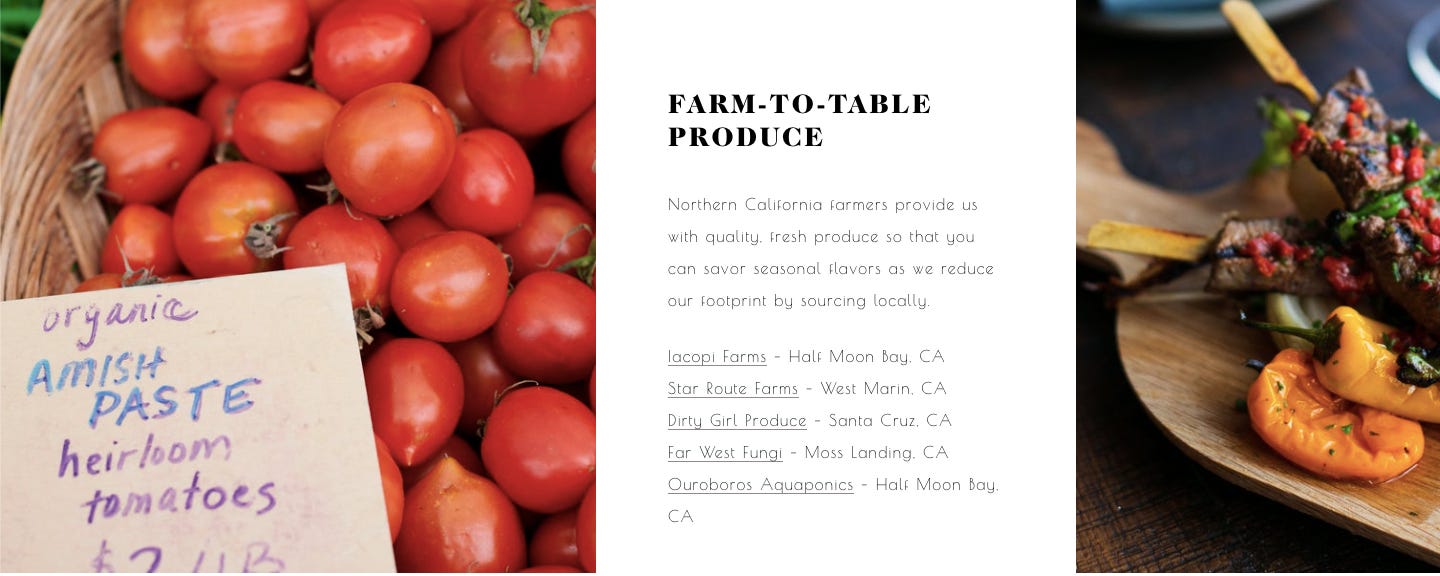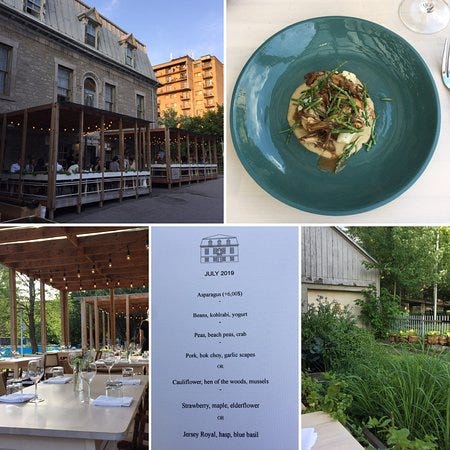Im No Longer Ordering Corn Salad In January and You Shouldn't Either
Seasonal Menus are the Answer to Restaurant Sustainability
Sustainability is a buzzword. When we think of sustainability and food, we spend too much time focusing on changing what we eat rather than changing where our food comes from. Popular media claims that meat is the sole reason for the food industry’s contribution to the climate crisis. While it is true that the food and restaurant industry has a huge carbon footprint, cutting out meat may not be the most accessible way to reduce it.
I ate the best corn salad of my life at a restaurant this past August, but I won’t order it again in January. Let me tell you why. The demand for out-of-season produce and internationally imported ingredients drives the restaurant industry's carbon footprint. Much of the food we eat at restaurants has travelled across the world to get to us. While it is nice to order the same thing all year round, what is tasty for our stomachs is not so great for the environment. Mapping the route of your favourite restaurant’s supply chain might scare you. Let’s revisit the corn salad. If I were to order this in the middle of January, the corn would have been shipped in from Honduras, flying over 3000 kilometres. The peaches and tomatoes would have been flown in from a greenhouse in China, flying over 12 000 kilometres. Restaurants have the opportunity to use local supply chains to build menu items. Now, I can order the corn salad with peace of mind knowing that it only travelled a short 200 kilometres from a local Ontario farm.
The farm-to-table movement has been picking up momentum in the restaurant industry. A shift towards sustainable seasonal menus will reduce transportation costs and emissions, support local economies, and combat food waste. Ingredients shouldn’t travel across the world to get to your plate. By looking at local supply chains, restaurants can curate their dishes based on what is in season and available. By flipping menu development to start with what ingredients are available and local, restaurants can offer eco-conscious dining experiences. ChefWorks recently published a ‘How To’ for developing a seasonal menu, which included partnering with local farmers and markets and thinking beyond produce to locally sourced eggs and meats.
The solution to restaurants' gigantic carbon footprint doesn’t need to be a complete rewrite of the restaurant culture. Restaurants are one of the best ways for friends and families to get together and socialize. I love a good dinner out too! But, it is time for both restaurants and consumers to start thinking about ways they can be more sustainable. To ensure the long-term health of the restaurant industry and work to reduce contributions to the carbon footprint, restaurants must begin to adopt sustainable practices. In addition, we, as restaurant goers, can drive demand for sustainable dining options.
Sustainable dining options are attainable and reasonable. Some restaurants are already working to fix this problem. For example, 1 Hotel in San Fran has recently opened its sustainable restaurant, Terrene, which operates on a zero-waste, eco-friendly, farm-to-table principle. Terrene offers fresh, local and sustainably-sourced ingredients for both their dishes and cocktails.
While it is the job of the restaurant industry to adopt sustainable practices to improve their carbon footprints, our role as consumers is just as important in driving change. With over 3/4 of millennials and Gen z’s saying they would pay more for sustainable products and services, it is time for diners to put their money where their mouth is. Next time you think of going out to eat, try a local restaurant that practices sustainability. Montreal is home to countless restaurants doing what they can to make the industry sustainable. Restaurant Candide offers a menu in constant evolution, composed of local ingredients. Au Pied de Cochon (just up on Duluth!) is a food lovers spot offering a monthly curated menu focusing on the freshest vegetables and locally sourced meats.
Seasonal menus are the best way for restaurants to start combating their carbon footprint. For restaurant goers, we can support these efforts by choosing to eat local and giving praise to restaurants that have started using these sustainable dining practices. Seasonal menus are appetizing too! Not only do seasonal ingredients reduce transportation emissions, but they also taste better! You don’t have to change what you eat to make a difference, you just have to be aware of where your food comes from.





I've never read much about seasonal menus before but I think this is a great read! Especially when learning how much it can help reduce a carbon footprint. Will keep this in mind moving forward.